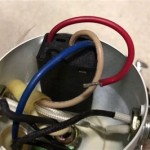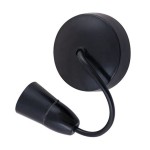Essential Aspects of Indirect Ceiling Lighting DIY
Indirect ceiling lighting is a popular and versatile lighting technique that can transform any room. It creates a soft, diffused glow that adds depth and ambiance to a space. If you're looking to achieve this sophisticated lighting effect in your own home, here's a comprehensive guide to DIY indirect ceiling lighting.
### Planning and PreparationBefore embarking on your DIY project, it's crucial to plan and prepare thoroughly. Determine the desired effect you want to achieve, whether it's ambient lighting, task lighting, or a combination of both. Measure the ceiling height, wall dimensions, and other relevant measurements to ensure proper fixture placement and wiring.
### Materials and ToolsTo complete your indirect ceiling lighting setup, you'll need the following materials:
- Light fixtures (e.g., LED strips, rope lights)
- Coves, moldings, or channels to conceal the lights
- Drywall or paneling for the ceiling surface
- Electrical wire and connectors
- Transformer or driver (if using LED strips)
In terms of tools, you'll need:
- Drill
- Screwdriver
- Wire strippers
- Level
- Measuring tape
Once you have gathered your materials and prepared your space, follow these steps for installation:
- Install Coves or Moldings: Create a channel or recess in the ceiling using coves, moldings, or channels. This will conceal the light fixtures and create the indirect lighting effect.
- Mount Light Fixtures: Install the light fixtures (e.g., LED strips, rope lights) within the coves or channels. Ensure they are securely mounted and evenly distributed.
- Wire the Lights: Connect the light fixtures to the electrical wire and secure the connections using connectors or terminals.
- Install Drywall or Paneling: Cover the coves or channels with drywall or paneling to create a smooth ceiling surface. Make sure there are no gaps or uneven areas.
- Install Transformer or Driver: If using LED strips, install a transformer or driver to convert the electrical current to the appropriate voltage.
- Use dimmable lights to adjust the brightness and ambiance of the space.
- Consider using different light temperatures (e.g., warm white, cool white) to create specific moods.
- Experiment with different cove or molding shapes to enhance the aesthetic appeal.
- Ensure the light fixtures are installed evenly to avoid uneven lighting.
- Test the lighting before installing the drywall or paneling to make sure it meets your expectations.
DIY indirect ceiling lighting is a rewarding project that can significantly enhance the ambiance of your home. By following the steps outlined in this guide, you can create a sophisticated and functional lighting system that complements your interior design. Remember to plan carefully, prepare properly, and take your time during the installation process for optimal results.

Indirect Lighting 22 Ideas For Atmospheric Design

Indirect Lighting With Led Guide Any Lamp

How To Build A Dropped Ceiling Box

23 Gorgeous Diy Light Fixtures That Anyone Can Make

3 Best False Ceiling Lights You Can Use To Create Better Ambience

Indirect Lighting 22 Ideas For Atmospheric Design

Create A Modern Suspension Lighting
How To Install Beautiful Led Cove Lighting At Home

Creative Diy Cove Lighting Ideas To Illuminate Your Space Govee

Indirect Lighting 22 Ideas For Atmospheric Design
Related Posts








